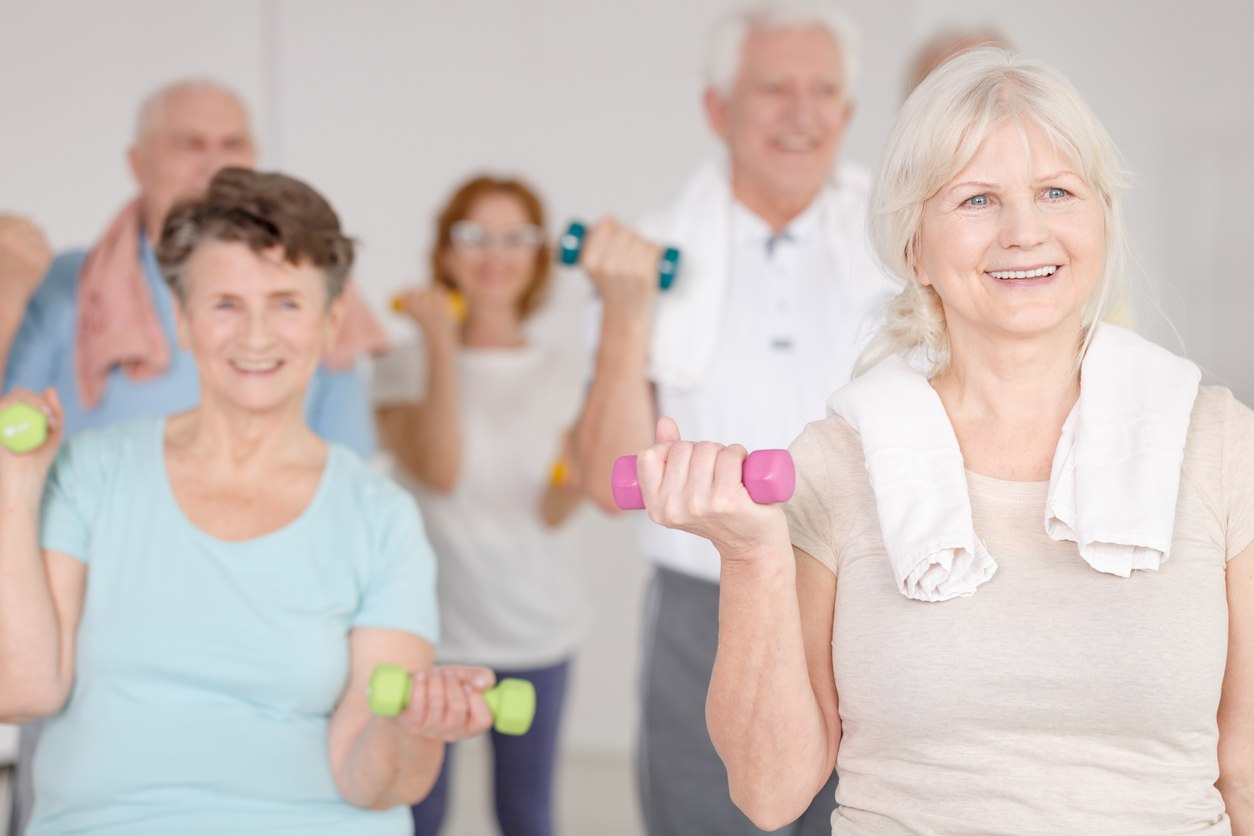
The lives of my parents involved plenty of physical movement, some strenuous at times. They walked miles to school, shoveled three feet of snow, never hired out work for lawn mowing, cleaning, and in my father’s instance, carried cases of shoes throughout the shoe stores he and his family co-owned.
They were not raised in the era of “working out,” counting our steps, or running Ironman triathlons.
It comes as no surprise that the next generation to experience aging, the Baby Boomers, understand the need for working out, as a sedentary lifestyle leads to a rise in fatal illnesses. Our medical systems are beginning to understand this more too. Many studies have shown over time how exercise, ones geared toward specific health challenges, can help lead to a longer, stronger life.
The prevalence of these programs is out to prove it.
Community Gyms
Following a recent caregiving writing workshop I led, my mother-in-law, who was in attendance, joined me for lunch. We munched on our bagel sandwiches with another participant from the workshop and said our goodbyes. As we exited the restaurant, I noticed a sign for a community gym, Parkinson’s Community Fitness. My father-in-law had recently been diagnosed with Parkinson’s. disease (PD). I suggested we peek inside for information.
Fifteen minutes later we walked out with additional knowledge on other outlets for her husband to maintain his strength and balance.
For those with mild to moderate Parkinson’s and Alzheimer’s, individuals can regain lost strength and improve mobility, beyond the obligatory physical therapy advised by one’s doctor and paid for via insurance. Aerobic activities like swimming or cycling are also helpful. And many exercise programs can be modified for anyone who is experiencing mobility issues.
More important, these programs promote togetherness. Like many, I prefer instructor-led classes when I’m working out. Usually, I’ll convince a few friends to join me as well too. The buddy system works for us. And it does for those who have additional physical challenges. Think of these new gyms and programs as a support group that works out together.
Studying this Effect
According to the Parkinson’s Foundation, one study showed that twice-a-week tango dancing classes helped people improve their mobility. Who doesn’t want to imagine themselves trotting around a dance floor, dressed in red or black, the predominant tango colors, whisked by a partner who is light on their feet.
And the National Institutes of Health calls community exercise programs a new tool, in a study published in June 2022. They concluded, “these new initiatives increase optimism about the possibility of developing programs that are cost-effective, easily accessible and a means of providing structured, ongoing exercise programs for people with PD. Some changes in thinking by the healthcare community are needed to delineate how community services can better complement current clinical care and to prepare for their integration. These changes require shifting views, changing behaviors, incentives, and capacities to support this change, and developing novel models that allow these two areas to interact and coordinate effectively.”
The study also emphasizes the role of technology in reaching individuals who may be homebound or located in areas without a prevalence of these programs at hand. “It would allow for more patients with PD to take part in such programs and also access PD expert care.” As well, in cases where community centers are sponsoring such programs, a technical support person would offer additional oversight and safety.
However, researchers do caution “there is an optimal minimal level of disease-specific expertise necessary, particularly with respect to the safe integration of exercises and reducing the risk of falls and other possibly dangerous issues.”
My mother-in-law noted how her husband was not ready for this level of exercise yet. When he’s released from standard physical therapy, he can work with his physician to establish next steps, one of which, hopefully, would be a community exercise program. Not only would this help sustain gains made in physical therapy, but he might find some like-minded workout buddies, or another group of individuals who want to play cards or talk sports, another benefit offered by these community gyms.
In essence, while they exist as a business to generate revenue, community gyms such as those mentioned aim is to keep individuals with Parkinson’s (and Alzheimer’s) on their feet and stable as long as possible. That’s my mother-in-law’s goal too.